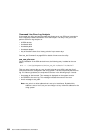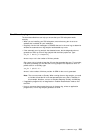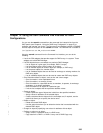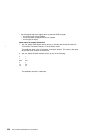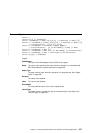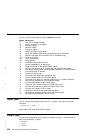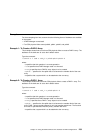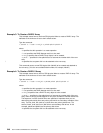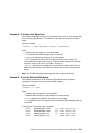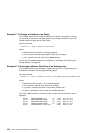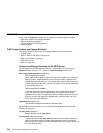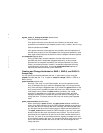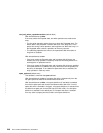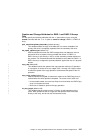Example 3: To Create a RAID-5 Array
This example shows how to use three SSA physical disks to create a RAID-5 array. The
attributes of the disks are all set to their default values.
Type the command:
> ssaraid -C -l ssa0 -t raid_5 -s pdisk0 pdisk1 pdisk2 -d
where:
-C specifies that this operation is a create operation.
-l ssa0 specifies that RAID Manager ssa0 is to be used.
-t raid_5 specifies that a RAID-5 array object is to be created.
-s pdisk... specifies the free pdisk that is to become the member disk of the new
array.
-d specifies that a system disk is to be attached to the new array.
This command causes a new SSA logical disk (hdiskX) to be created and attached to
the new array. (X is the next available hdisk number; for example, hdisk5.)
Example 4: To Create a RAID-10 Array
This example shows how to use four SSA physical disks to create a RAID-10 array. The
attributes of the disks are all set to their default values.
Type the command:
> ssaraid -C -l ssa0 -t raid_10 -s pdisk0 pdisk1 pdisk3 pdisk2 -d
where:
-C specifies that this operation is a create operation.
-l ssa0 specifies that RAID Manager ssa0 is to be used.
-t raid_10 specifies that a RAID-10 array object is to be created.
-s pdisk... specifies the free pdisk that is to become the member disk of the new
array. RAID-10 arrays provide support for only even numbers of member disk drives.
The sequence in which the disk drives are specified is important when you are
determining which disk drives are primary and which are secondary members of the
array. The first, third, fifth (and so on) disk drives are primary disk drives. The
second, fourth, sixth (and so on) disk drives are secondary disk drives. In this
example, pdisk0 and pdisk3 are the primary disk drives.
-d specifies that a system disk is to be attached to the new array.
240 User’s Guide and Maintenance Information
|
|



